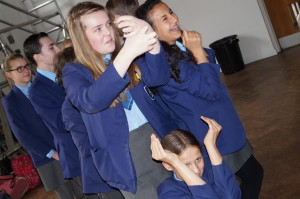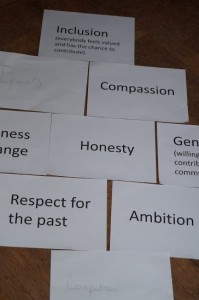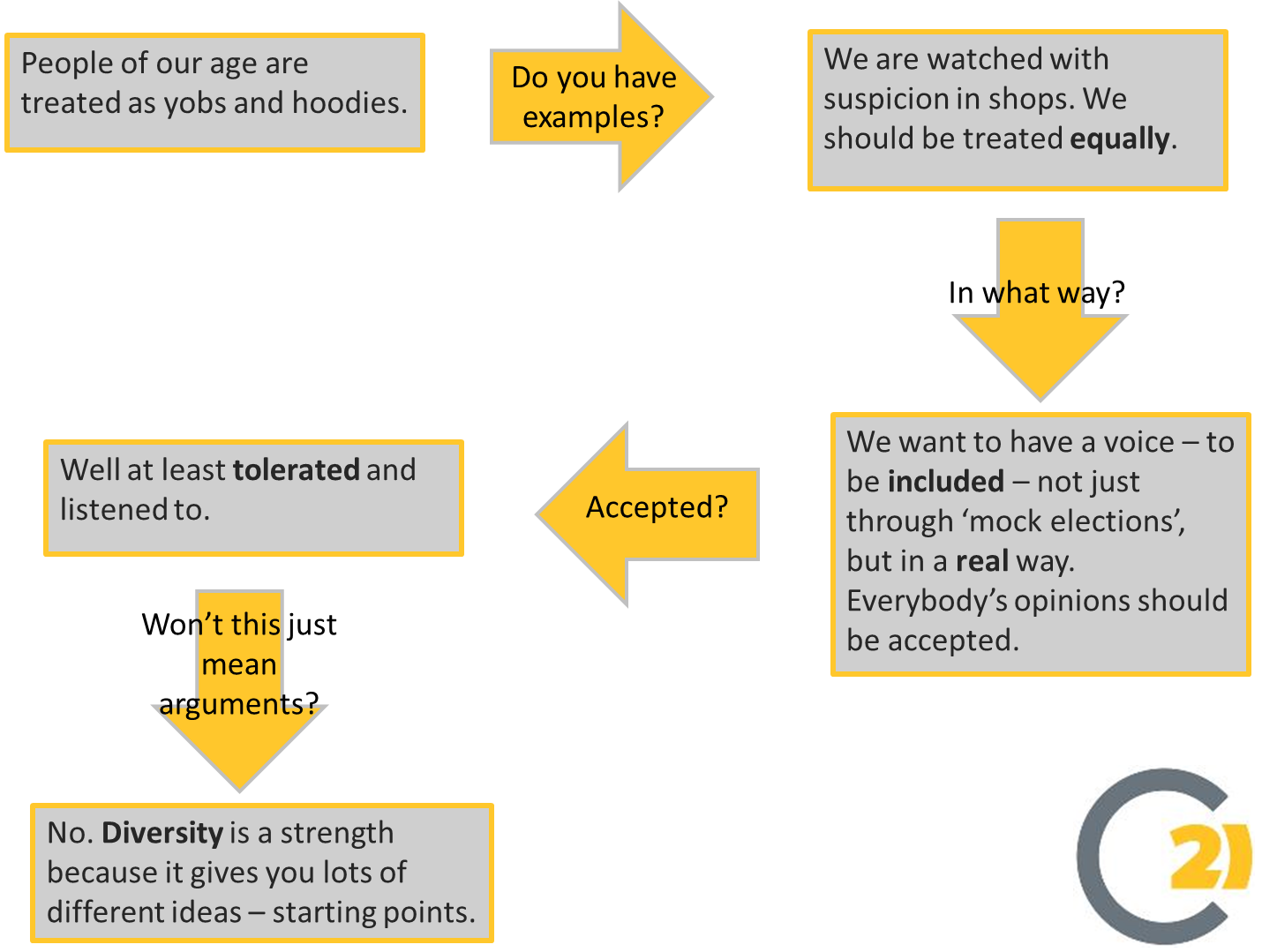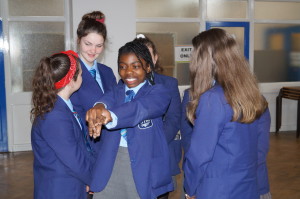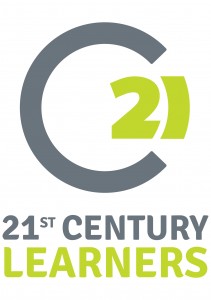Community Values from the Perspective of the Young
Crewe Town Council recently gave a small grant to TYA Creative and me to develop a project around British Values, with a particular emphasis on developing understanding between young and old in the town. We see this as an opportunity to address the British Values agenda in a meaningful and educationally purposeful way. In a previous post we summarised our work with residents at a care home in Crewe. Here we describe our work with a group of Year 8 students in a local secondary school. Our next post will describe what happens when we bring young and old together for the final ‘inter-generational’ dialogue.
Armed with the values, ideas and stories of the older generation, we visited a group of Year 8 students at St Thomas More Catholic High School in Crewe. Despite having only a short time with the students, we played some warm-up games in an attempt to create a ‘safe’ or ‘caring‘ environment in which dialogue might flourish. We also explored some simple ‘ground rules‘ for effective dialogue drawing on those used in the ‘Thinking Together’ project developed by Lyn Dawes, Neil Mercer and Rupert Wegerif. These ground rules were:
- Speak one at a time
- Share your ideas with the group, giving reasons to support them
- Seek to understand everybody’s ideas, asking questions when appropriate
- Challenge each other’s ideas respectfully
- Try to reach agreement based on the best reasons given
(When developing a new ‘Community of Enquiry’ we would normally use the 4Cs framework at the heart of Philosophy for Children, which categorises the habits of effective thinking into 4 inter-dependent groups – Caring, Collaborative, Critical and Creative thinking, to support effective dialogue, but in the time available this simple set of ground rules was more appropriate).
We shared our experiences at the nursing home, and presented the children with some of the values that had been discussed. We asked them to work in groups of three to prioritise the values, encouraging them to add ideas of their own and to follow the agreed ground rules.
Inclusion (everybody being valued and having the chance to make a contribution), equality and diversity / tolerance were identified as key themes to explore further. We then moved into a facilitated whole group dialogue (still guided by our ground rules); a few of the key ideas arising are captured below:
The children’s opening thought was that they did not have ‘equality’ because they were assumed to be ‘yobs and hoodies’. The facilitator questioned whether this was a media-derived stereotype and asked them to provide examples of being treated in this way, which they did. The term ‘equality’ was briefly explored and challenged, resulting in the group asserting that they wanted the opportunity to influence real decisions in their communities. There was an assertion that a plurality of views, provided by a diverse community, was a strength in local democracy and this idea persisted after a little challenge from the facilitator.
It seemed that the ‘big ideas’ of equality, inclusion and diversity / tolerance needed to be explored in more detail, so we used a second hour-long session to problematise these. Warm-up games were used to re-establish a positive climate and the group were reminded of the ground rules. After working in groups of various sizes to create ‘tableaux’ of various situations (birthday parties, an ice-cream machine(!) etc.) the students were asked to create images representing equality, inclusion and tolerance. Each group was challenged about the meaning of their concept by the facilitator in role as ‘Everyman’. After a short exchange they were handed an envelope containing three problematising questions (e.g. Are all opinions of equal value? Is living with diversity a necessary inconvenience or a genuine strength?). The groups engaged in a ten minute dialogue around these questions, before taking it in turns to recreate their tableau. This time techniques such as ‘thought tracking’ and ‘zooming in’ were used to explore the frozen images further.
Challenging the students in this way helped them to see the complexity of seemingly simple ideas like equality, inclusion and tolerance in communities. Their ideas were developed and many interesting thoughts emerged (e.g.’There can be no change without diversity – without different views’; ‘We accept that some opinions are ‘wrong’ and need to be challenged, but we still need to show respect for the people who express them, no matter who they are’; ‘In decision making we should try to incorporate aspects of all views’).
Having thought through their ideas in some detail, the students are now ready to share them with the older generation at Pickmere Court. This encounter will be the subject of our next post in this series.


